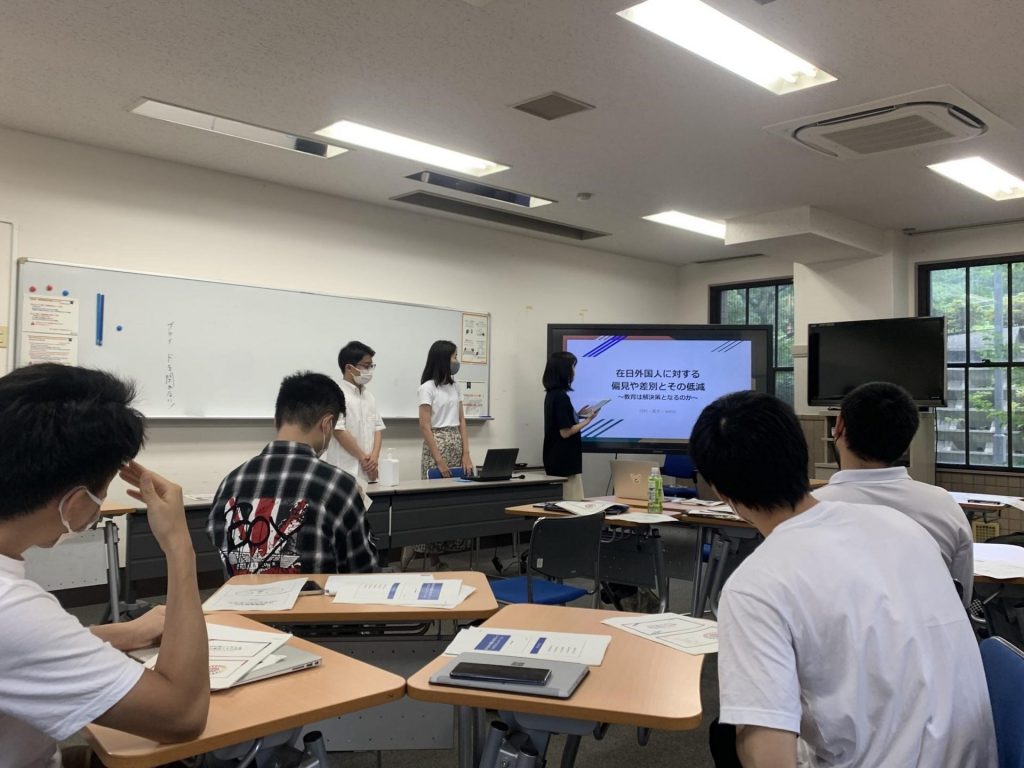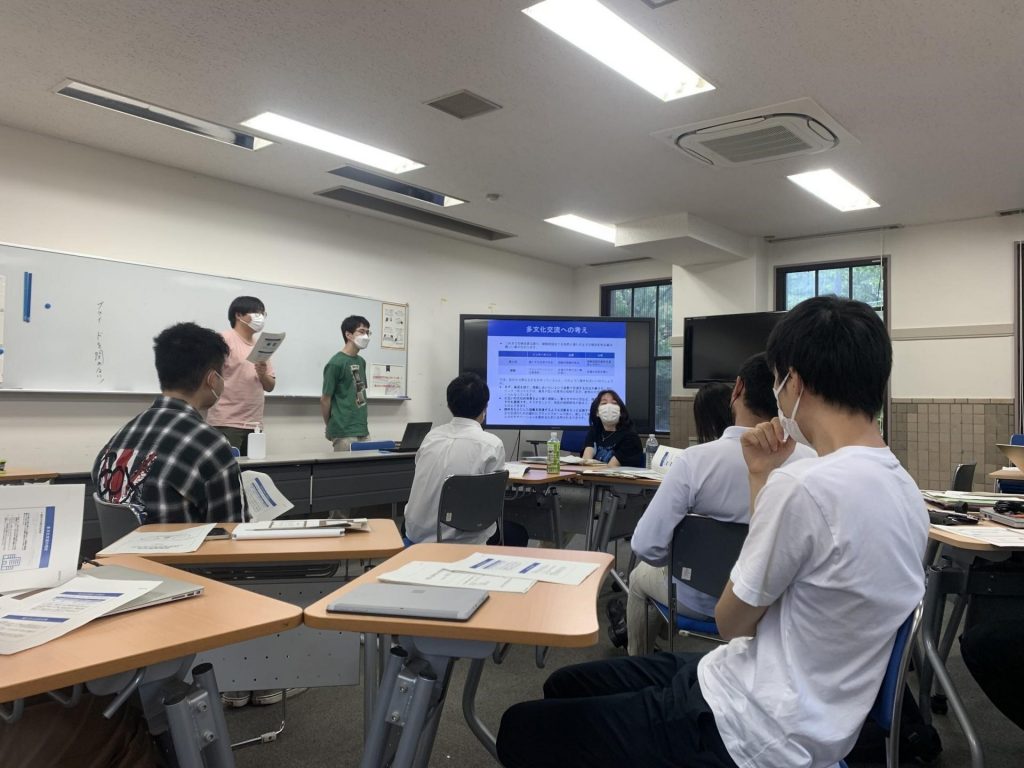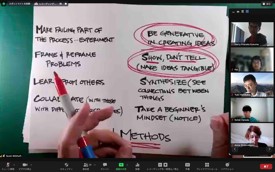Multicultural Collaborative Leadership S, a class for students in Tokyo Tech Academy for Leadership was held together with Japanese Culture 4: Multi-cultural collaboration 2QA of Japanese language and culture courses offered to international students. Professor Midori Komatsu, the instructor of this course, specializes in the fields of intercultural psychology and Japanese language education. Professor Komatsu has deep knowledge in the field of leadership. In her academic paper published in 2017, titled Perceptions of Japanese Students‘ on Leadership Qualities : In the Case of Mono- and Multicultural Groups, Professor Komatsu wrote that “For monocultural groups, abilities, attitudes, and behaviors specifically associated with critical moments and emergencies, rather than normal situations, were perceived as leadership qualities, whereas for multicultural groups, leadership was perceived in terms of coordination capability and attitudes in cross-cultural cooperative activities.”
This course, consisting of seven classes, aims for student to:
- From the perspective of cross-cultural education and social psychology, understand the issues that become barriers of effective cross-cultural communication and possible solutions to those issues.
- Through discussions and collaborative experiences between international students and Japanese students, learn about various views and values practically, and acquire communications skills and language skills for multicultural collaboration.
- Acquire intercultural communication and leadership skills.
(Reference: Syllabus of Multicultural Collaborative Leadership S:
http://www.ocw.titech.ac.jp/index.php?module=General&action=T0300&GakubuCD=00&GakkaCD=400039&KeiCD=0&course=39&KougiCD=202232471&Nendo=2022&lang=EN&vid=03)
In the first half of the course, students learned about current situation of international students in Japan and theories of intercultural/multicultural communication. The following are some of the topics that were covered in the course.
- What is culture? -Visible culture and invisible culture-
- What is it to adapt to other cultures? -U-curve model-
- Why does bias occur?-In-group/out-group contact theory-
- International students in Japan and number of study-abroad Japanese students
Students were able to learn and deepen understanding of basic theories through quizzes and discussions.
The latter half of the course consisted of group work in small teams made up of international and Japanese students. By utilizing the knowledge that they acquired in the first half of the course, students did some group work on multiple topics: issues of multicultural exchange in the current society and how to promote multicultural exchange, prejudice and discrimination and ways to reduce them, and other various issues relating to multicultural coexistence. During the group work, international students talked about their experiences in Japan, and students decided on an issue to work based on those experiences of intercultural communications. After research work and drafting presentation materials, students made a presentation at the end of the course. Each team worked and communicated well during the group work.
List of presentation topics:
- Issues of multicultural coexistence and communication in multicultural situations
- Prejudice and discrimination against foreigners in Japan and how to reduce them -Can education be the solution?-
- Communication in virtual space -Can remote communication deepen intercultural communication?-


At the end of the course, Professor Komatsu reflected on the group work and gave a message to the students that trying to understand others can also help to understand ourselves, and that she recommends students to communicate with many people and experience many things. The review on the course was not merely a reflection. Professor Komatsu and the students delved into topics such as how to communicate smoothly and not be intimidated to talk to people who do not speak Japanese as their mother tongue, and interesting issues that can be discussed in this course in the future.
In this course, each student was able to think deeply about multicultural communication and leadership while doing practical work. In the course students learned that it is not always necessary to communicate in English to be international. (Sometimes, it is misunderstood that simply learning the English language is the same as being international, but being international means more than speaking English well.). Also, students became aware of microaggression around them. These may be worthwhile to be aware of when studying in other classes too.
- Student’s voice:
-Through this course, I was able to learn about the barriers that may occur when collaborating in a multicultural environment and how to overcome them. It was a good opportunity to think back on the environment around me. I also realized how difficult multicultural collaboration is. (E.Y.)
This course will be also offered in Q4. It is suitable for students who:
- Want to communicate with international students
- Are interested in intercultural and multicultural communication
- Want to think and learn about global leadership
This course is exclusively for ToTAL students. I hope many of you register to the course in Q4!
(Reference) Professor Komatsu’s interview (In Japanese only.)
https://educ.titech.ac.jp/ila/news/2020_04/058946.html
(Reported by: Yoshiki Funaoka, 4th cohort ToTAL student, Graduate major in Social and Human Sciences, School of Environment and Society)


